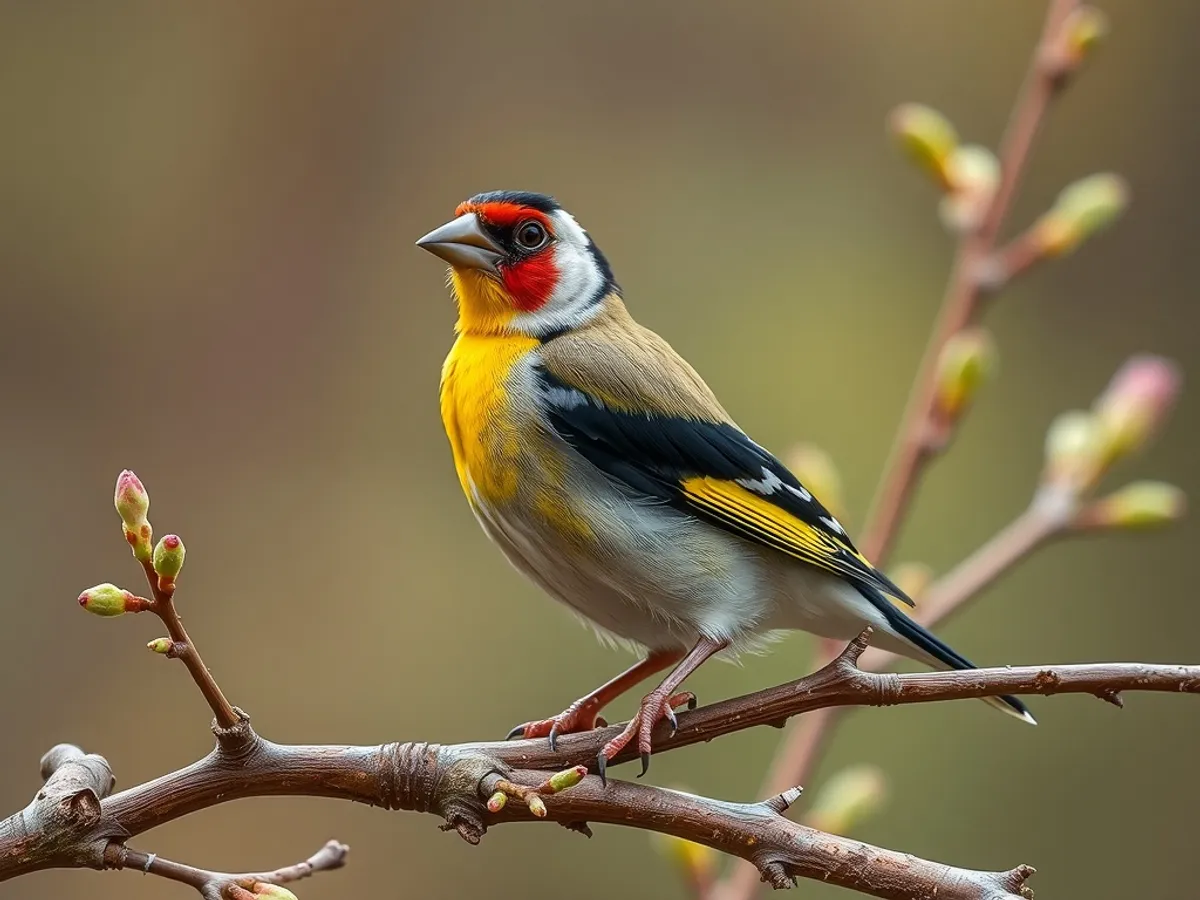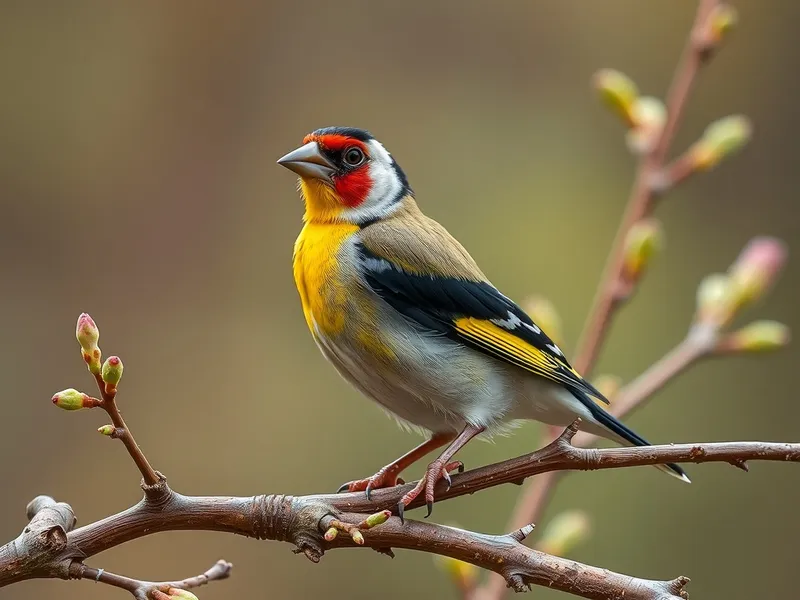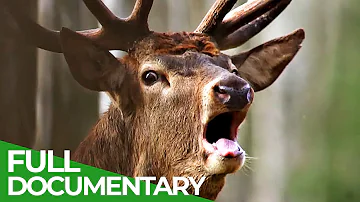
European Goldfinch
Carduelis carduelis

Meet the European Goldfinch
The European Goldfinch is a small passerine bird renowned for its vivid plumage, featuring a bright red face, black and white head, and a striking yellow wing bar. Native to Europe, North Africa, and western and central Asia, it thrives in open, partially wooded landscapes, gardens, and orchards. Goldfinches are highly social, often forming flocks outside the breeding season and communicating with melodious, tinkling calls. Their delicate, pointed beaks are specialized for extracting seeds from thistles and teasels, making them a familiar and delightful sight in rural and urban settings alike.
Classification
Bird
Habitat
Open woodland, orchards, gardens, and farmland
Diet
Herbivore
Lifespan
2-5 years
Conservation
Least Concern
Weight
14-19 grams
📖Fascinating Facts
Melodious Song
European Goldfinches are celebrated for their sweet, tinkling song and calls, which make them popular among bird enthusiasts.
Specialized Diet
Their narrow, pointed beaks allow them to expertly extract seeds from thistles, dandelions, and teasels.
Colorful Plumage
Their striking red face, white cheeks, and bright yellow wing patches make them easy to identify and a favorite subject for artists and poets.
📋Detailed Description
The European Goldfinch (Carduelis carduelis) is a small, slender finch measuring 12–13.5 cm in length, with a wingspan of 21–25 cm and an average weight of 14–19 grams. Its striking plumage features a vivid red face bordered by black and white, a buff to golden-brown back, white underparts, and bold yellow wing patches that are especially conspicuous in flight. The tail is black with white spots, and the beak is long, fine, and pale, perfectly adapted for extracting seeds from thistles and teasels. Males and females are similar in appearance, though males may have a slightly larger red mask extending behind the eye. Juveniles lack the red facial markings and have a more subdued, brownish head. European Goldfinches are agile and acrobatic, often seen perching on the tips of seed heads or fluttering in small, loose flocks. Their melodious, tinkling song is a familiar sound in their range, consisting of a series of liquid trills and twitters. The species is highly social outside the breeding season, forming flocks that may number in the hundreds. Goldfinches are partial migrants, with some populations in northern and eastern Europe moving southward in winter, while others remain resident year-round. Their adaptability to human-modified landscapes has facilitated their expansion into urban parks and gardens.
💡 Did you know?
Unlike many songbirds, European Goldfinches prefer seeds from thistles and teasels, which many other birds avoid due to the plants' spiky defenses.
🔬Research & Sources
Wikipedia Summary
The European goldfinch or simply the goldfinch is a small passerine bird in the finch family that is native to the Palearctic zone in Europe, northern Africa, and western Asia. It has been introduced to other areas, including Australia, New Zealand, Uruguay and the United States.
Last Modified: 5/31/2025
🎭Behavior & Social Structure
European Goldfinches exhibit complex social behaviors, especially outside the breeding season when they form large, cohesive flocks for foraging and roosting. They are diurnal, with peak activity during early morning and late afternoon. Their feeding behavior is highly specialized: using their slender, pointed bills, they deftly extract seeds from composite flowers, particularly favoring thistles (Cirsium spp.), teasels (Dipsacus spp.), and dandelions (Taraxacum spp.). They are also known to feed on alder and birch seeds in winter and will occasionally supplement their diet with small invertebrates, especially during the breeding season. Goldfinches communicate through a rich repertoire of calls, including a distinctive, musical twitter used for flock cohesion and territorial defense. During courtship, males perform fluttering display flights and sing persistently to attract females. Aggressive interactions are generally limited to brief chases or posturing, as the species is otherwise tolerant and gregarious.
👶Reproduction & Life Cycle
Breeding typically occurs from April to August, with some pairs raising two or even three broods per season. European Goldfinches are monogamous during the breeding season, with pairs forming shortly before nesting. The nest is a compact, cup-shaped structure woven from moss, grasses, and plant down, often lined with animal hair or feathers, and is usually placed high in the fork of a tree or shrub. The female lays 4–6 pale blue eggs speckled with reddish-brown, which she incubates alone for 11–14 days. Both parents participate in feeding the altricial chicks, which fledge at around 13–18 days post-hatching. Juveniles remain dependent on parental care for several days after fledging, gradually learning to forage independently. High nest site fidelity is observed, with some pairs returning to the same territory or even nest site in subsequent years.
🛡️Adaptations & Survival
The European Goldfinch's slender, conical bill is a key adaptation, allowing it to access seeds from plants with spiny or tightly packed seed heads that are inaccessible to many other birds. Their acrobatic foraging style enables them to cling to swaying stems and reach seeds at the tips of plants. The bright yellow wing bars and red facial mask serve as visual signals in social and mating contexts, aiding in species and mate recognition. Their melodious song and varied calls facilitate complex social interactions and territory defense. Behavioral flexibility, including tolerance of urban environments and a broad diet, has enabled the species to thrive in a wide range of habitats, from rural farmland to city parks.
📚Research Sources
🎨Cultural Significance
The European Goldfinch has held symbolic significance in European art, literature, and folklore for centuries. In Christian iconography, it is often associated with the Passion of Christ, symbolizing resurrection and the soul, due to its red facial markings. The bird appears in numerous Renaissance paintings, such as 'Madonna of the Goldfinch' by Raphael. Its melodious song and vibrant plumage have made it a favored cage bird since antiquity, referenced in poetry and music. In some Mediterranean cultures, goldfinches are believed to bring good luck and are featured in traditional proverbs and stories.
🔬Recent Research & Discoveries
Recent research has focused on the European Goldfinch's response to urbanization, revealing that urban populations may exhibit altered song characteristics and increased tolerance to human presence. Genetic studies have clarified the phylogenetic relationships within the Carduelis genus, supporting the distinctiveness of several subspecies, such as C. c. britannica in the British Isles. Ongoing studies are examining the impacts of climate change on migration timing and breeding phenology. There is also growing interest in the effects of neonicotinoid pesticides on goldfinch health and reproductive success, as these chemicals can reduce the availability of wildflower seeds.
🎥Wildlife Videos

European Goldfinch Around The River - #NatureWaltz A natural Documentary
river #wildlife #garden A camera in nature ! ================================== The architecture of the world. A Natural ...
Architekton513

Europe's Great Wilderness | Episode 2: Europe's Green Heart | Free Documentary Nature
Europe's Great Wilderness - Episode 2: Europe's Green Heart | Wildlife Documentary Watch 'Europe's Great Wilderness - Episode ...
Free Documentary - Nature

Goldfinch Bird: A Glimpse of Nature's Beauty
Enjoy watching The Goldfinch bird in this charming video, where we show off its unique beauty and bright colors. We will take you ...
Wonders of nature

Wild Europe - Kingdom of the Beasts | Free Documentary Nature
Wild Europe - Home of the Beasts | Free Documentary Nature Watch 'Europe's Great Wilderness - Episode 1' here: ...
Free Documentary - Nature

The Baltic | Survival in a Pristine Ecosystem | Animal documentary
Welcome to "The Baltic | Survival in a Pristine Ecosystem", a captivating wildlife documentary that transports you to the serene yet ...
WILD NATURE - Nature animal documentary

10 Interesting facts you should know about European Goldfinch | Nature's Tiny Masterpiece
European goldfinches are renowned for their striking and vibrant plumage. They have red faces, white cheeks, black caps, and ...
Eco Lens
🌍Habitat Information
The European Goldfinch typically inhabits Open woodland, orchards, gardens, and farmland environments. European Goldfinchs have adapted to their environments with specialized features and behaviors.
Primary Habitat:
Open woodland, orchards, gardens, and farmland
More detailed habitat information will be available soon.
🛡️Conservation Status
The European Goldfinch is currently classified as Least Concern. Conservation efforts are crucial for preserving this species for future generations.
Common Threats:
- 🏠Habitat loss and fragmentation
- 🌡️Climate change impacts
- 🎯Hunting and poaching
- 🏭Human-wildlife conflict
⚠️Threats & Conservation Challenges
Currently assessed as Least Concern by the IUCN, the European Goldfinch faces localized threats including habitat loss due to agricultural intensification, pesticide use, and reduction of weedy field margins. Illegal trapping for the cage bird trade remains a problem in parts of southern Europe and North Africa. Climate change may alter the distribution of key food plants, potentially impacting food availability. However, the species' adaptability to urban and suburban environments has mitigated some threats, and population trends are generally stable or increasing in many regions. Conservation challenges include maintaining suitable nesting and foraging habitats and enforcing regulations against illegal capture.
🔬Scientific Classification
Scientific Name
Carduelis carduelis
Classification Hierarchy
🔍 About Taxonomic Classification
Taxonomic classification is a hierarchical system used by scientists to classify and organize living organisms based on shared characteristics and evolutionary relationships.
The system moves from broad categories (Kingdom) to increasingly specific ones, with each animal's scientific name typically consisting of its Genus and species.
📝Community Notes
Share your observations and insights about the European Goldfinch with our community of wildlife enthusiasts.
Join Our Community
Sign in to share your observations and connect with fellow wildlife enthusiasts.
Sign In to ContributeNo community notes yet
Be the first to share your observations about the European Goldfinch!
Explore European Goldfinch
Select a tab above to learn more about this amazing animal.
📸Photo Gallery
No photos available for this animal yet.
🌟Discover More Wildlife
Continue your journey of discovery with more fascinating animals from our database
